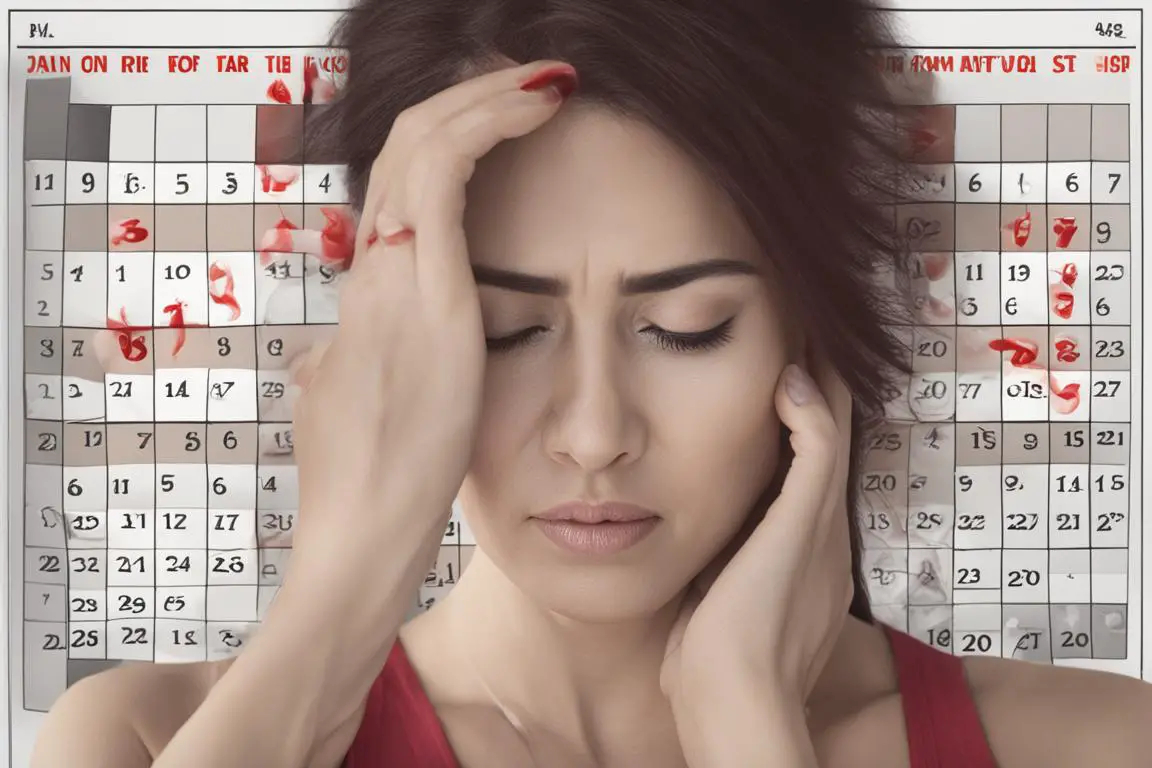Recognizing Endometriosis Symptoms in Women
Recognizing endometriosis symptoms in women is crucial to the diagnosis of endometriosis. When my wife was diagnosed with stage 4 endometriosis, I knew only a little about this chronic illness, moreover, aside from the stages of endometriosis, I wasn’t aware of the different types of endometriosis. My wife has deep infiltrating endometriosis.
So, what can I say, in a nutshell, to help you understand and help with recognizing endometriosis symptoms in women?
Endometriosis is a condition where tissue similar to the lining inside the uterus grows outside of it, causing symptoms such as pelvic pain, severe menstrual cramps, and infertility. Women may also experience heavy menstrual bleeding, pain during intercourse, and digestive issues.
But that is just the tip of an iceberg of endometriosis symptoms, it can get quite complicated, especially, if like my wife who was diagnosed with fibromyalgia disorder the following year.
Scroll down to find out the details…
- Recognizing Endometriosis Symptoms in Women
- What is Endometriosis?
- Risk Factors for Endometriosis
- Common Symptoms of Endometriosis
- Diagnosis of Endometriosis
- Treatment for Endometriosis
- Living with Endometriosis
- Endometriosis and Infertility
- Endometriosis Awareness and Prevention
- The Importance of Timely Diagnosis and Treatment
- Source Links
Recognizing Endometriosis Symptoms in Women
As a man, it’s important to be aware of the signs and symptoms of endometriosis. This condition, where endometrial tissue similar to one that grows outside the uterus, can have a significant impact on your quality of life. By recognizing these symptoms early on, you can seek timely medical intervention and appropriate treatment to manage this condition effectively.
Endometriosis symptoms may vary from person to person, but there are some common signs to watch out for. These include pelvic pain, cramps before and after menstruation, lower back or abdominal pain, pain during intercourse, pain with bowel movements or urination, and infertility. If you experience any of these symptoms, it’s crucial not to dismiss them and to consult with a healthcare professional.
Early diagnosis is key to managing endometriosis effectively. By being proactive about your health and seeking medical advice, you can take control of your well-being and find the support you need to navigate the challenges that come with this condition. Remember, you are not alone, and there are resources available to help you along this journey.
What is Endometriosis?
Endometriosis is a condition that occurs when endometrial-like tissue, which normally lines the uterus, grows outside of it. This abnormal tissue can attach itself to various pelvic organs, including the fallopian tubes, ovaries, pelvic cavity lining, and the outer surface of the uterus.
It can also affect other areas such as the bladder, cervix, intestines, rectum, and abdomen. The presence of endometrial tissue outside the uterus can cause inflammation, scarring, and the formation of painful cysts. The pain associated with endometriosis can be intense and may occur throughout the menstrual cycle.
It is important to note that the exact cause of endometriosis is still unknown. However, certain factors such as hormonal imbalances, genetics, and immune system dysfunction may contribute to its development.
If you want to learn more about endometriosis, I wrote an “Endo-Tool, Endometriosis for Men” e-Book.
You can get the 1st Chapter of the e-Book for FREE, and if you like it, you’ll get a Whopping 33% Discount on the Whole Book, plus discounts on other helpful tools. You have nothing to lose but a lot to gain!
The first chapter alone contains all the comprehensive medical knowledge about endometriosis, including:
- What is endometriosis?
- What are the symptoms?
- What causes endometriosis?
- What does endometriosis look like?
- What are the stages?
- What are the types?
- What is adenomyosis and how is it related to endometriosis?
- Why do some women develop severe endo and others don’t?
- Does endometriosis cause infertility?
- How is endometriosis diagnosed?
- Do types and stages affect the treatment?
- Recurrence of endometriosis after excision surgery.
FREE Chapter of “Endo-Tool”
Endometriosis e-Book for Men
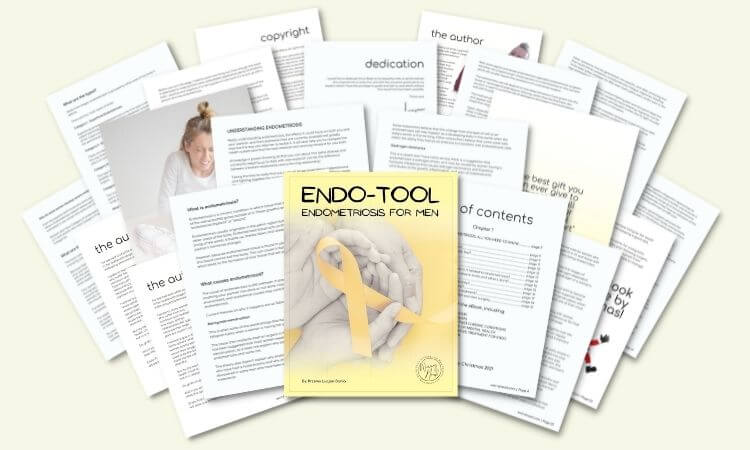
Symptoms and Impact on Pelvic Organs
The presence of endometriosis can lead to a variety of symptoms. The most common symptom is pelvic pain, which may be experienced during or outside of menstruation. Women with endometriosis may also experience lower back or abdominal pain, pain during intercourse, pain with bowel movements or urination, and infertility. The severity of symptoms can vary from person to person.
It is crucial to understand and recognize the symptoms of endometriosis to ensure early diagnosis and appropriate treatment. Early intervention can help manage pain, preserve fertility, and improve the overall quality of life for individuals with this condition.
Risk Factors for Endometriosis
Endometriosis is a complex condition with various risk factors that can increase the likelihood of its development. While the exact cause of endometriosis remains unknown, research has identified several factors that may contribute to its onset. These risk factors include hormonal factors, family history, and age of onset.
Hormonal Factors
Hormonal factors play a significant role in the development of endometriosis. Estrogen, a hormone responsible for the growth and shedding of the uterine lining during menstruation, can promote the growth of endometrial tissue outside the uterus. Higher levels of estrogen in the body, whether naturally occurring or from hormonal therapies, can increase the risk of developing endometriosis.
Family History
Having a family history of endometriosis can significantly increase an individual’s risk of developing the condition. If a close female relative, such as a mother or sister, has been diagnosed with endometriosis, the likelihood of developing it oneself is higher. Genetic factors may contribute to this increased risk, although the specific genes involved have not yet been fully identified.
Age of Onset
The age at which menstruation begins can also impact the risk of endometriosis. Starting menstruation at an early age, such as before the age of 11, has been associated with a higher risk of developing endometriosis later in life. Conversely, reaching menopause at an older age, such as after the age of 55, may also increase the risk.
These age-related factors suggest that the duration of exposure to estrogen over a woman’s lifetime may influence the development of endometriosis.
While these risk factors can make someone more susceptible to endometriosis, it is important to remember that the presence of these factors does not guarantee the development of the condition.
Many individuals with no identifiable risk factors can still develop endometriosis, while others with several risk factors may never experience the condition. The complexity of endometriosis highlights the need for further research to fully understand its underlying causes and develop effective prevention strategies.

Common Symptoms of Endometriosis
Endometriosis is a condition that affects numerous women around the world, and it can manifest in a variety of ways. The most common symptom experienced by those with endometriosis is pelvic pain.
This pain is typically more intense than normal menstrual cramping and can occur during or outside of the menstrual period. Many women also report lower back or abdominal pain, which can be chronic and debilitating.
Pain during intercourse, known as dyspareunia, is another prevalent symptom of endometriosis. This pain can range from mild discomfort to severe, sharp pain, making sexual activity difficult or even impossible for some women. In addition, individuals with endometriosis may experience pain with bowel movements or urination, as the abnormal endometrial tissue can cause inflammation and irritation in the surrounding organs.
Pelvic Pain and Infertility
Infertility is a significant concern for many women with endometriosis. The presence of endometrial tissue outside of the uterus can lead to the formation of adhesions and scar tissue, which can affect the function of the ovaries, fallopian tubes, and other reproductive organs. This can make it challenging for eggs to be released, sperm to reach the eggs, or for a fertilized egg to implant properly. As a result, women with endometriosis may experience difficulty getting pregnant.
It is important to note that the severity and frequency of symptoms can vary among individuals with endometriosis. Some may experience mild discomfort, while others may face severe pain and significant limitations in their daily lives. If you are experiencing any of these symptoms or suspect you may have endometriosis, it is crucial to consult with a healthcare provider for a proper diagnosis and appropriate treatment options.
| Common Symptoms of Endometriosis | Frequency of Occurrence |
|---|---|
| Pelvic pain | Experienced by the majority of women with endometriosis |
| Pain during intercourse | Affects up to 75% of women with endometriosis |
| Infertility | Affects approximately 30-50% of women with endometriosis |
Diagnosis of Endometriosis
Diagnosing endometriosis requires a comprehensive evaluation by a healthcare provider. The process typically begins with a pelvic exam, where the doctor examines the reproductive organs for any physical abnormalities or signs of inflammation. During this exam, they may also check for tenderness or pain in the pelvic region.
Additionally, the healthcare provider may inquire about the individual’s medical history and symptoms.
In some cases, additional imaging tests may be ordered, such as an ultrasound or MRI, to provide a more detailed view of the reproductive organs. While these imaging techniques can help identify larger endometrial lesions, they may have limited accuracy in detecting smaller lesions.
| Diagnostic Methods | Advantages | Disadvantages |
|---|---|---|
| Ultrasound | Non-invasive, readily available, and relatively low-cost imaging technique. | Limited accuracy in identifying smaller endometrial lesions. |
| Laparoscopy | Gold standard for diagnosing endometriosis, allowing direct visualization and potential removal of abnormal tissue. | Requires a surgical procedure and anesthesia, which may pose risks and involve a longer recovery period. |

Advancements in Diagnosis
Recent advancements in diagnostic techniques have shown promise in improving the accuracy and efficiency of endometriosis diagnosis. For example, blood tests that measure certain biomarkers associated with endometriosis are being explored as potential diagnostic tools.
Genetic testing and molecular analysis of tissue samples are also being studied to aid in the identification of specific genetic markers or gene mutations that may be linked to endometriosis.
It is important to note that early diagnosis of endometriosis can lead to timely intervention and management of symptoms. Therefore, if you suspect you may have endometriosis or are experiencing symptoms such as pelvic pain, painful periods, or infertility, it is crucial to consult with a healthcare provider for a thorough evaluation and appropriate diagnostic tests.
Treatment for Endometriosis
Living with endometriosis can be challenging, but there are various treatment options available to help manage symptoms and improve quality of life. The approach to treatment depends on the severity of symptoms and the individual’s reproductive goals.
Pain management: One of the primary goals of treatment is to alleviate pain associated with endometriosis. This may involve the use of pain medications such as nonsteroidal anti-inflammatory drugs (NSAIDs) or stronger prescription pain relievers.
Hormone therapy: Hormone therapy is commonly used to help control the growth of endometrial tissue and reduce pain. This can include the use of birth control pills, hormonal patches or injections, or progestin-only therapies.
In more severe cases or when symptoms significantly impact a woman’s quality of life, surgical removal of endometrial tissue may be recommended. This is usually done through a minimally invasive procedure called laparoscopy. During laparoscopy, the abnormal tissue is removed, which can help relieve pain and improve fertility outcomes.
It’s important for individuals with endometriosis to work closely with their healthcare provider to determine the best treatment approach for their specific situation. Ongoing communication and regular follow-up appointments can help ensure that the treatment plan is effective and adjusted as needed.
| Treatment Options | Benefits | Considerations |
|---|---|---|
| Surgical removal of tissue (laparoscopy) | Effective in removing abnormal endometrial tissue | May require recovery time and potential risks associated with surgery |
| Fertility preservation techniques | Allows for the preservation of fertility in individuals planning to have children | Requires careful consideration and discussion with healthcare provider |
| Assisted reproductive technologies (in vitro fertilization) | Can help individuals with endometriosis conceive | Not guaranteed to be successful and may involve financial considerations |
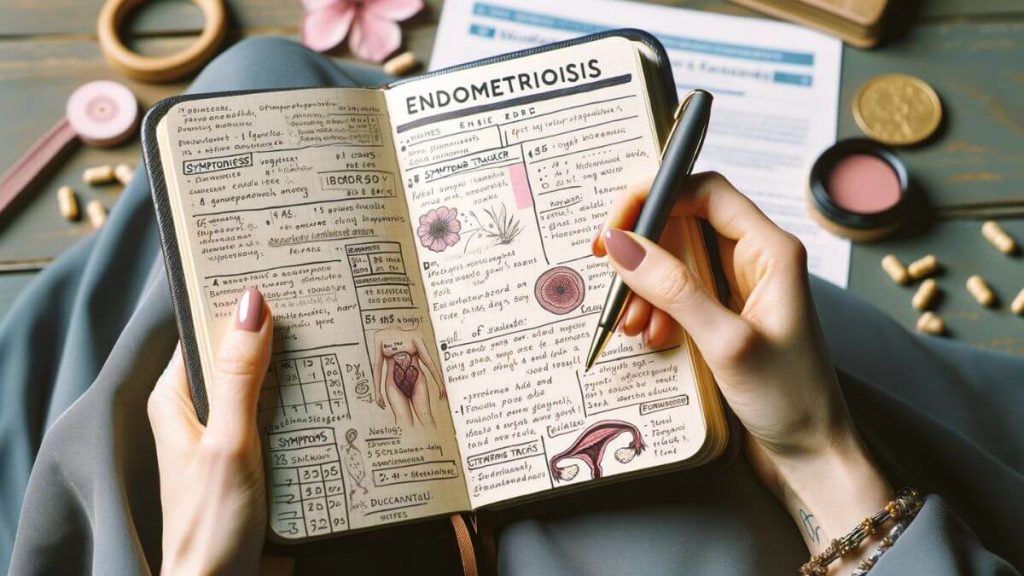
Living with Endometriosis
Living with endometriosis can be challenging, both physically and emotionally. The pain and discomfort associated with the condition can significantly impact daily life and overall well-being. However, by seeking support, managing pain, and practicing self-care, individuals with endometriosis can improve their quality of life and find ways to navigate the challenges they face.
Support Groups
Joining a support group can provide a sense of community and understanding for individuals living with endometriosis. Connecting with others who share similar experiences can offer emotional support, practical advice, and a safe space to express concerns and frustrations.
Support groups may meet in person or be available online, allowing individuals to participate from the comfort of their own homes. Seeking support from healthcare providers and loved ones is also essential for constructing a strong support network.
Managing Pain
Pain management plays a crucial role in improving the quality of life for those with endometriosis. Pain medications prescribed by healthcare professionals can help alleviate discomfort during flare-ups, while relaxation techniques such as deep breathing, mindfulness, and meditation may help reduce stress and the perception of pain.
Applying heat therapy, such as using a heating pad or taking warm baths, can also provide relief. It’s important to work closely with healthcare providers to find the most effective pain management strategies for individual needs.
Self-Care
Engaging in self-care practices can contribute to overall well-being and help manage the physical and emotional impact of endometriosis.
Maintaining a balanced and nutritious diet, exercising regularly, and getting enough restful sleep can support overall health and reduce symptoms. Managing stress is also crucial, as stress can exacerbate pain and other symptoms. Incorporating stress-management techniques such as yoga, journaling, or engaging in hobbies can help promote relaxation and emotional well-being.
| Living with Endometriosis | Support Groups | Managing Pain | Self-Care |
|---|---|---|---|
| Can be challenging physically and emotionally | Joining support groups provides a sense of community and understanding | Pain medications and relaxation techniques can help manage discomfort | Maintaining a healthy lifestyle and managing stress contribute to overall well-being |
| Seek support from healthcare providers and loved ones | Offer emotional support, practical advice, and a safe space to express concerns | Applying heat therapy can provide relief | Engage in self-care practices such as a balanced diet, regular exercise, and adequate rest |
| Connect with others who share similar experiences | Support groups can meet in person or be available online | Work closely with healthcare providers to find effective pain management strategies | Incorporate stress-management techniques into daily routines |
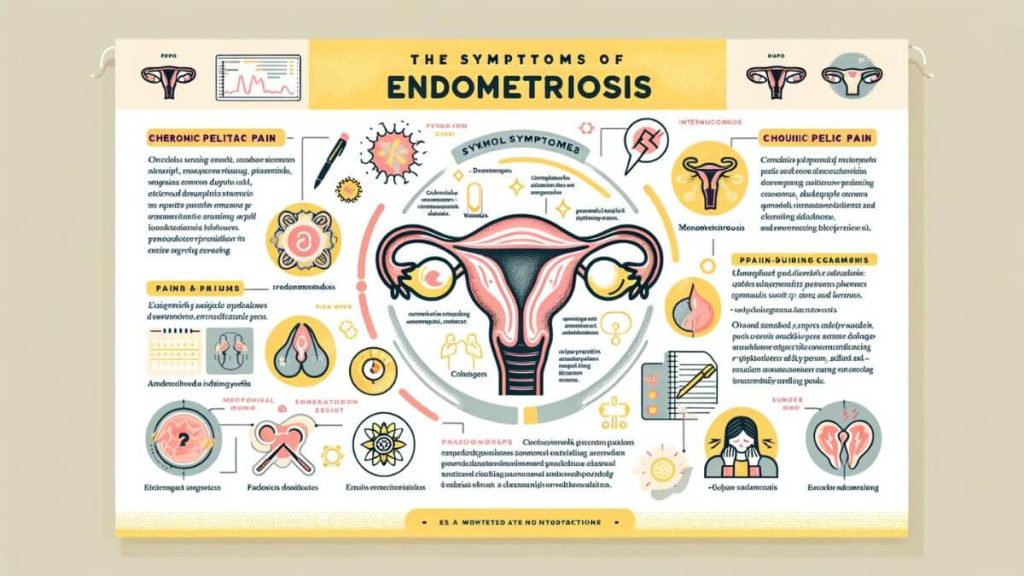
Endometriosis and Infertility
Endometriosis can have a significant impact on a woman’s fertility. The presence of endometrial tissue outside the uterus can interfere with the reproductive process in several ways. Firstly, it can affect the release of eggs, making it more difficult for fertilization to occur.
Additionally, endometriosis can cause scarring and adhesions, which can block the fallopian tubes and prevent the sperm from reaching the egg. Furthermore, the abnormal tissue can damage both the sperm and the fertilized egg, reducing the chances of successful implantation and pregnancy.
However, it’s important to note that not all women with endometriosis will experience infertility. Many women with mild to moderate endometriosis are still able to conceive and carry a pregnancy to term. The impact of endometriosis on fertility can vary depending on the severity of the condition, the location of the abnormal tissue, and other individual factors.
Treatment options for infertility associated with endometriosis aim to address the underlying causes and improve the chances of successful conception. Surgical removal of the endometrial tissue, also known as excision surgery, can help restore fertility by removing the blockages and scar tissue.
Fertility preservation techniques, such as freezing eggs or embryos, may be considered in cases where future fertility is a concern. In more severe cases, assisted reproductive technologies like in vitro fertilization (IVF) may be recommended to increase the likelihood of pregnancy.
Treatment Options for Endometriosis-Related Infertility
Treatment for infertility caused by endometriosis should be personalized based on individual circumstances and reproductive goals. Consulting with a fertility specialist who has experience in managing endometriosis-related infertility is essential. Together, you can explore the available treatment options and make informed decisions that align with your desires and expectations.
It’s important to remember that infertility caused by endometriosis can be emotionally challenging. Seeking support from your partner, loved ones, and support groups can provide valuable emotional support and guidance throughout your fertility journey. Remember, you are not alone, and there are resources available to help you navigate the challenges of infertility and endometriosis.
Endometriosis Awareness and Prevention
As someone who has personally experienced the impact of endometriosis, I am passionate about raising awareness to help others recognize the signs and symptoms of this condition. Endometriosis affects millions of women worldwide, yet it often goes undiagnosed or misdiagnosed for years.
By increasing awareness, we can empower women to seek medical help sooner, leading to earlier diagnosis and appropriate intervention.
Recognizing the symptoms of endometriosis is crucial for early detection. These symptoms may include pelvic pain, cramps, pain during intercourse, and infertility. If you are experiencing any of these symptoms, it is important to consult with a healthcare provider. Remember, you are not alone, and there are support groups and resources available to guide you through your journey with endometriosis.
While there are no known ways to prevent endometriosis, understanding the risk factors can help individuals take proactive steps to manage their reproductive health. If you have a family history of endometriosis or any of the risk factors associated with this condition, it is essential to have open and honest conversations with your healthcare provider.
Together, you can develop a plan to monitor and manage your reproductive health to minimize the impact of endometriosis on your life.
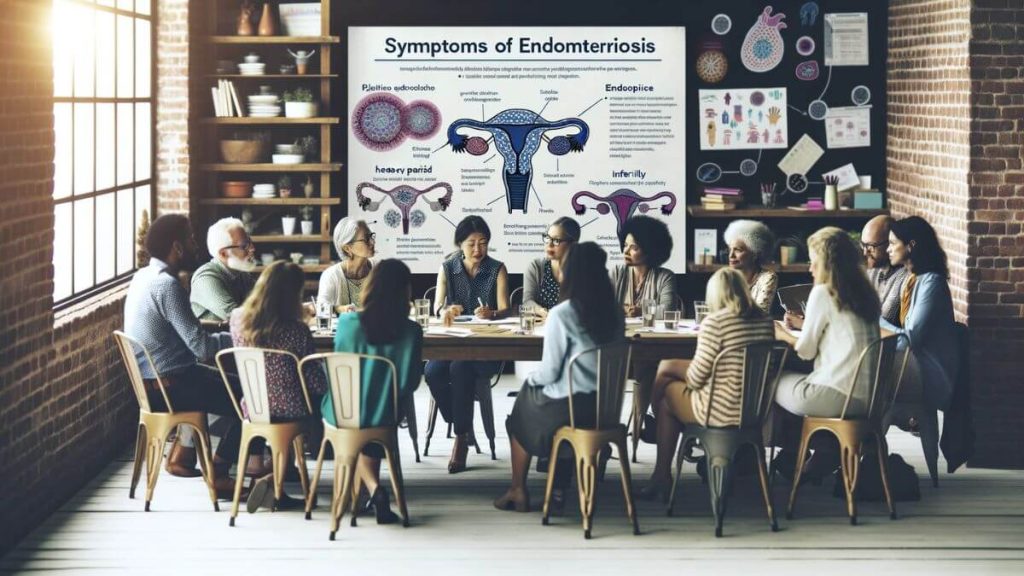
The Importance of Timely Diagnosis and Treatment
As someone who has personally experienced the impact of endometriosis, I cannot stress enough the importance of timely diagnosis and treatment. Early intervention is key to improving the quality of life for individuals affected by this condition.
Recognizing the symptoms of endometriosis and seeking medical help as soon as possible allows for prompt evaluation and intervention. By taking action early on, we can better manage the debilitating pain and address fertility concerns, if any.
It is crucial for us to advocate for our own health and well-being by discussing any concerns or symptoms with our healthcare provider. They are there to support us and provide the necessary guidance and treatment options. Remember, you are not alone in this journey.
With timely diagnosis and appropriate treatment, we can lead fulfilling lives despite endometriosis. Let’s prioritize our health and seek the support we need to navigate the challenges associated with this condition. Together, we can make a difference in improving the lives of those affected by endometriosis.


About Me
Hi, I’m Lucjan! The reason why I decided to create this blog was my beautiful wife, who experienced a lot of pain in life, but also the lack of information about endometriosis and fibromyalgia for men…
